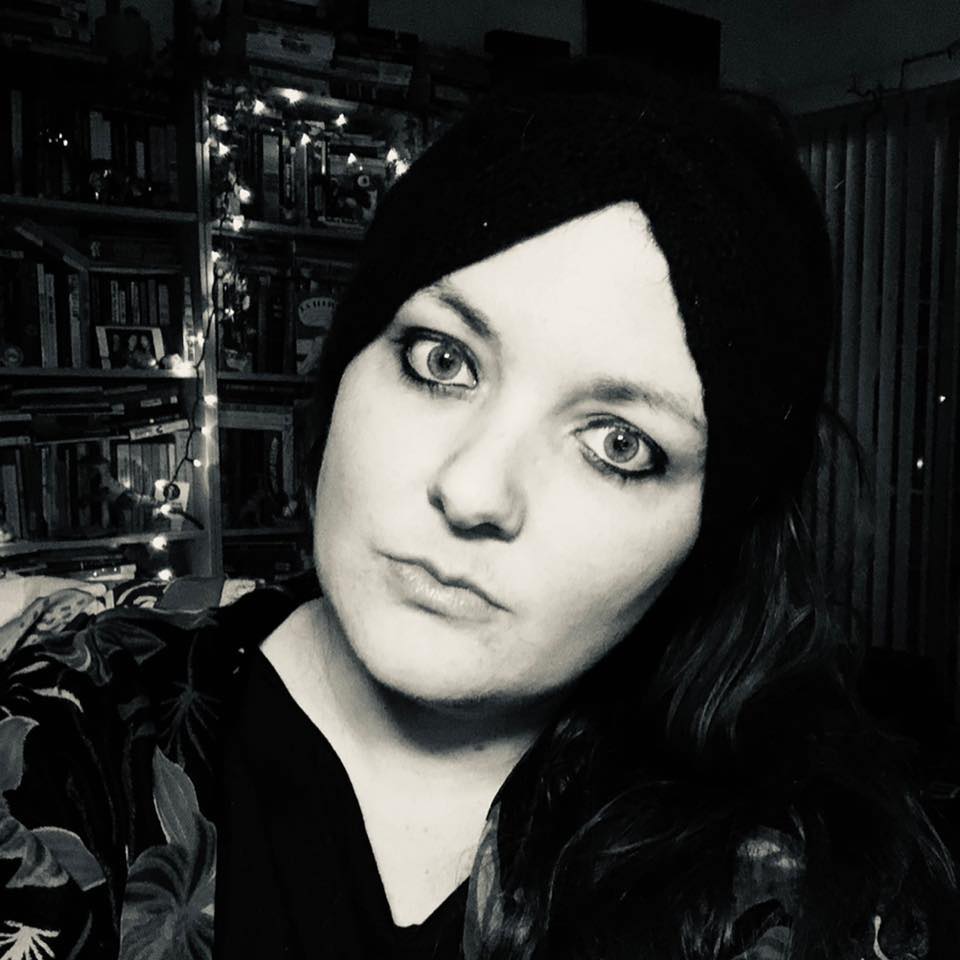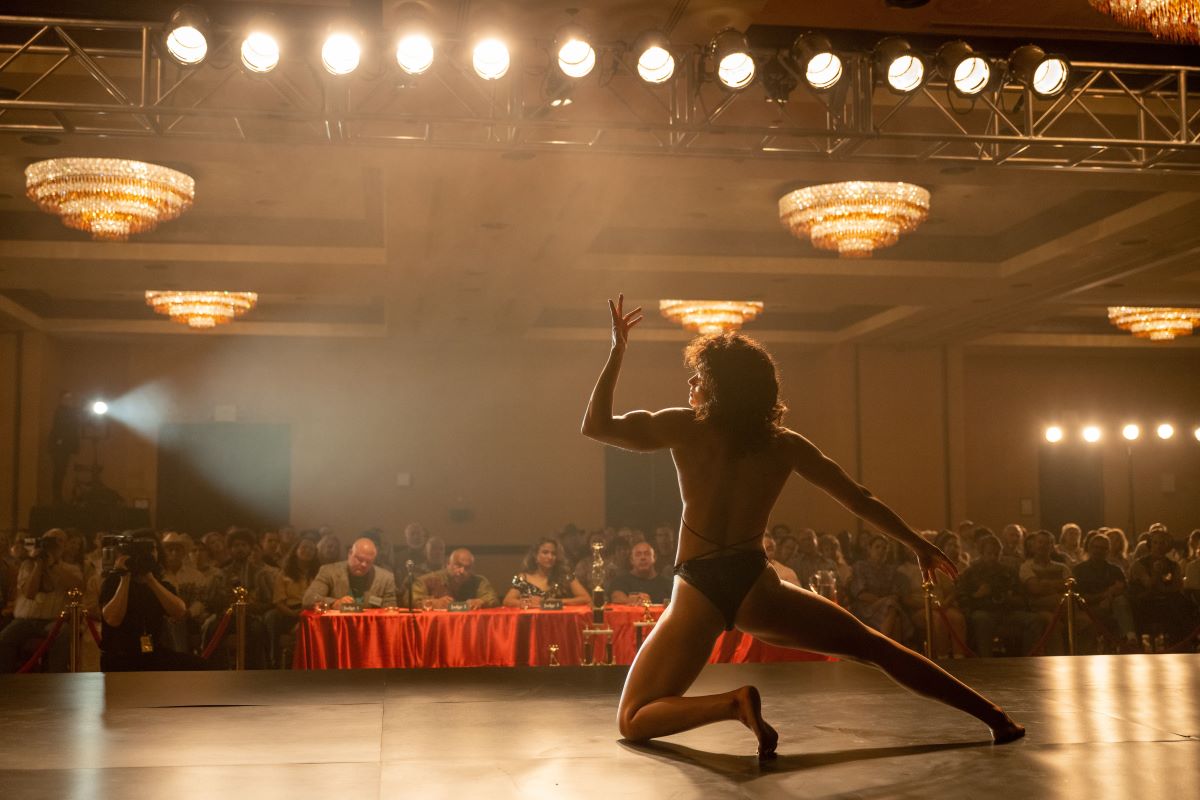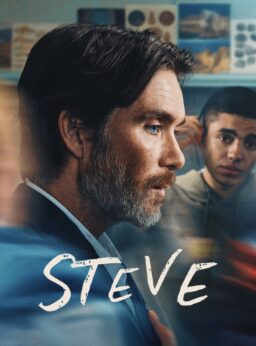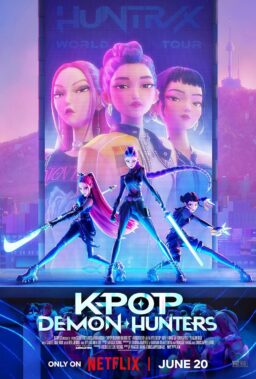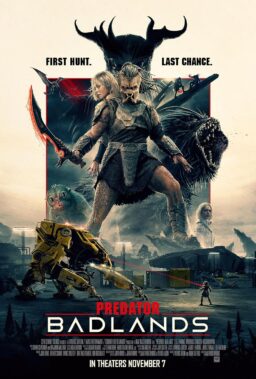Set in rural New Mexico in the late-1980s, “Love Lies Bleeding,” from acclaimed writer-director Rose Glass, explores themes of obsession and addiction through the love story of a reclusive gym manager Lou (Kristen Stewart), with a bloody past, who falls hard for a bodybuilding drifter named Jackie (Katy O'Brian). The film pulsates with the grit of the pulpiest pulp fiction and flights of magical realism as it propels itself towards an unpredictable ending.
Five years ago, Glass made a splash with her psychological horror film “Saint Maud,” which premiered at the 2019 Toronto International Film Festival. Despite the film’s prolonged release due to the onset of the Covid-19 pandemic, Glass’s debut feature film was hailed as an instant classic, with veteran filmmaker Danny Boyle calling it “genuinely unsettling.” Among other accolades, she was named the Best Debut Director at the 2020 British Independent Film Awards.
Born in London, Glass grew up in Essex where she always knew she wanted to make films, cutting her cinematic teeth using her parents’ video camera. While attending the London College of Communication she worked as a runner on various film sets, and made her proper debut short film “Storm House.” She graduated from the National Film and Television School in 2014, where she directed the 1950s set short film “Room 55,” which played at several film festivals including SXSW in 2015.
Her films are portraits of women pushed to psychosexual extremes. Her short “Room 55” finds an uptight woman’s rigid self-discipline upended after meeting a mysterious woman while spending an unplanned night at a roadside hotel. In “Saint Maud,” the titular nurse finds herself lost in a web of religious fanaticism and repressed sexual desires while caring for a new patient. And of course, her new film “Love Lies Bleeding” sees how the collision of Stewart and O’Brian’s characters plots them on a course simultaneously towards earth-shattering violence and euphoric, larger-than-life romance.
For this month’s Female Filmmakers in Focus column RogerEbert.com spoke to Glass over Zoom about Elton John, the alien landscape of New Mexico, crafting visceral soundscapes, and the liberation of transgression.
When I first saw the title of your film, immediately my mind went to Elton John.
No one has asked about that song yet!
At what point did you realize that was a title you wanted to use for this film, and was the song the starting point?
I knew I wanted the title to be something melodramatic, that felt like it could be like the title of some hokey paperback novel. My mom is really into gardening, and I was talking to her about plants. And I saw this particular plant and asked her what it was called. She said, “It’s called love lies bleeding.” And it’s this kind of Amaranthus which has these amazing, big, kind of beautiful, kind of ugly red seed head things. I immediately enjoyed the fabulous melodrama of it, and the fact that you use its name as a phrase or words.
So then I was obviously googling it, and found out there’s more than one other film that’s been made with the title, and obviously the Elton John song. So I think for a long time when me and Weronika Tofilska, my co-writer, when we were writing it, we wondered if it meant that it had to be the end credit song, but it didn’t quite fit. I love the song, but it didn’t quite fit totally with that moment. It may be changing a bit now, but otherwise, anytime you Google “love lies bleeding,” you either get pictures of that plant or the Elton John song.

I think now it’s also Kristen Stewart, so we all win. You mentioned pulp novels. When I was watching the film I got really big Jim Thompson vibes, with how violent and sexual and gritty it is. I wondered if he was an inspiration at all?
No, I don’t know who that is.
Oh, you would love Jim Thompson based on this film. He wrote “The Killer Inside Me” and a few other really pulp novels. There were some great adaptations in the ’80s and ’90s. I think you would absolutely love those books. I’ll leave that as a recommendation.
I’m googling it.
Were there any other pulp novels, whether it’s lesbian pulp or any other kind of mid-century pulp novels that you drew from?
I don’t know if it necessarily falls into that category or not, but one of the books that briefly appears as a prop in the film is Macho Sluts by Pat Califia, which has some really, really cool BDSM erotic short stories. In fact, briefly at one point, I even toyed with that as a working title, just because I think it’s so great. I saw that book in a shop years ago, and that title and the cover of it was just completely like wow, and some of that some of the stuff in there is pretty intriguing.
I am a big John Waters fan. His films were an influence. Also, I read it a while ago, but The Thief’s Journal by Jean Genet. I think there’s a connection between both Waters and Genet and their attitudes towards transgression and crime being beautiful. At one point, I really wanted Kristen’s character Lou in the film to have a poster of “Female Trouble,” the John Waters film, on her apartment wall, but we couldn’t clear it or something. In a way the film has that Dawn Davenport being proud about and finding liberation through transgression sort of feeling.
You’ve mentioned a lot of different kinds of inspirations. When you’re in the middle of developing the film, do you sort of collect these things in a notebook, do you have lookbooks, or are you someone who does collages?
I’m always kind of like a magpie collecting different line images and stuff. But to be honest with this one, I think because of the setting in that time and place in America, and the Americana-ness of it was just so gargantuan and the amount of big famous films that are from this era, I tried to bury my head in the sand a little bit more. With “Saint Maud,” for instance, I had like, a list of these films that I was referencing to everyone when we were making. “Rosemary’s Baby,” “Persona,” all those kinds of things.
With this one we didn’t quite so much. When we were writing it, obviously we’re both film nerds, so it was almost like we’re thinking about filmmaking as we were writing it, but more like the archetypes of filmmaking and storytelling, of thrillers and stuff like that. A lot of that cinematic language, I think, audiences in general know instinctively, without us necessarily even having to reference this specific film noir or anything. The influences were many, but more on that level of what we’ve probably just absorbed through a lifetime of watching films and reading books, rather than anything specific.

I read in a bio of you on the BAFTA website that you used to make mockumentaries about aliens, and given that this film is set in New Mexico–
Does it say that on the BAFTA website? [Laughs]
It does. So, you have the crater gym, etc., and so I was wondering that magical, otherworldly UFO of it all was in the back of your mind once you set the film in New Mexico?
I didn’t even initially make the connection of it being alien land in New Mexico. We ended up in New Mexico because it’s got great tax breaks for film. The mockumentary was just literally stupid films I’d make when I was like a kid. On a family holiday I did a fake Steve Irwin style nature documentary where 13-year-old me would be like “oh look over here” and then, instead of a nature documentary, aliens had landed, who were played by my dad. I was a really cool kid [laughs]. I guess I’ve always been interested in the strange, probably just because I felt really bored and lonely a lot while growing up.
So being out in that bit of the country, we filmed the gypsum mine (the crack itself was special effects) but that landscape just felt very lunar and as if it was on the moon. The name of the gun club is Louisville, because Kristen Stewart’s name is Lou and Ed Harris, her character’s dad, is also named Lou. Liouville is apparently the name of a crater on the Moon somewhere. So then that’s why I called the gym “Crater.” We also added loads more stars into the sky in post and some of the music that we ended up using had this sci-fi feel, which was another fun layer. In my head, I see this as a cosmic love story and that these two little sort of aliens can find each other.
The stars in that opening shot really took me out. Just so gorgeous. I also love the way you layered in sound. Sometimes it’s really haunting and beautiful, and sometimes it’s just utterly disgusting. I’d love to hear your thoughts on crafting that soundscape.
This was super important. I wanted it to feel very immersive and visceral. I mean, I’ve worked again with Paul Davies, who was the sound designer on “Saint Maud.” He has a great team as well. With every department, I was like “don’t hold back. The word of the day is visceral.” Some of the gore sound effects are just ridiculous. He has this amazing sound effects editor called Tim, who I think was also a drummer, who did a lot of this stuff in the gym, which was very rhythmic and bombastic. I want to mention music as well because all of that is super important. I wanted the sound and the music to be feeding into one another. We’ve obviously got an amazing score by Clint Mansell. I was so excited to work with him. It gave the whole film this throbbing, pulsing engine to it.
But also like before working with him or Paul, when I first came on board, my partner also worked on the film as well as a music consultant. There’s a lot of commercial music in the film basically, which is sort of weaving in and out of the score and sound. And he chose all of that music. Because the 80s is a decade that’s been so done to death on film. I knew there needed to be a lot of music in it, but I wanted to avoid the temptation to fill it with really familiar 80s needle drops. So I got him to come up with this whole sound palette. Even in prep and when we were shooting, he was doing playlists for everyone. There’s a lot more weird, slightly more forgotten gems from slightly more alternative, left field kind of artists. So the alien-y, twinkling scenes are tracked by this Japanese musician called Shiho Yabuki, who was this amazing ambient musician from the 80s. Patrick Cowley, Throbbing Gristle, just all these really great artists. Actually, then when Clint and Pau came on board, they said they remembered listening to that music like when it first came out.

Kristen Stewart and Katy O’Brian obviously have great chemistry together. How do you help craft that chemistry with them? What do you do with your actors, once you have them together?
They had it immediately. Casting the right people is such an important thing. They’re both such amazing actors, and we didn’t really have much prep time, to be honest, so the first time they met was at the chemistry read. And that was pretty much the only pre-shoot rehearsal time we had. You try to engineer everything so that it works, but ultimately, even if you do everything right, and they give amazing performances, sometimes that last sort of spark thing that is a bit unquantifiable and magical, you just have to pray that it happens. And thank God it did.
Are there any women who have made films that have inspired you or that you just think are really cool that people maybe haven’t heard of that they should seek out?
It’s probably no surprise that I’m a big fan and appreciative of Julia Ducournau, who is obviously making very exciting, very fun films. And who else would I put on that list? Liliana Cavani, who did “The Night Porter.” I’ve mentioned that film a few times. That was on the list of films I suggested some of the actors watch because of that dark eroticism in that film. Incredible. And Lynne Ramsay. I mean, she’s an inspiration. I was lucky enough to meet her. She interviewed me for something when I was promoting “Saint Maud.” She’s very inspiring.
Do you feel like you’re in a class of women in England right now that are supported and really free to be super creative at the moment?
Yeah, there are a lot of women doing great stuff in England. Molly Manning Walker has been having the most amazing year with her film “How to Have Sex”; Prano Bailey-Bond’s film “Censor” came out around when “Saint Maud” did, and she’s an awesome person. There does seem to be a few of us knocking about and I feel very fortunate to be amongst good company.
